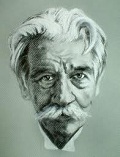My profile as a trainer
Introduction to my methodology


Before choosing the appropriate method of management development, a clear diagnosis of the need and to whom it is intended must be defined. In all cases, the selected methodology incorporates demonstrative training systems, close, tangible, visual, and emotional awakeners … The objective is to get the message beyond the rational brain of the target audience.
I handle the Management Skills training process using different formats, depending on the different goals and needs. They can be:
Conference
One day course, Workshop, Seminar
Tutoring, Coaching
Course
Active Learning
And what is the conceptual foundation of this methodology?
Conference
The main purpose of the Conference is:
- awaken the the audiences’ desire to become more competent in Personal and Management Skills,
- facilitate an agile self-check so each participant can verify their stage of development in these skills, and -last but not least-,
- be entertaining
Lasting a maximum of one hour, as it is proven that any longer reduces the efficiency of the communication process, it consists of a summary of the theme chosen in order to allow attendees to make a quick comparative between their usual procedure, and the new ideas.
Throughout the exposition, I resort to the use of high-impact resources that help convey the message and make it eye-catching, such as:
- A calm, un-dramatic atmosphere that makes for a friendly and didactic exposition.
- Ironic humor -albeit not hurtful- and/or paradoxical, that entertains and fixes re-call.
- The use of anecdotes and real-life examples which allow for amenity, plausibility and practicality.
- A few images that give a visual touch and therefore more efficiency to the transmission of the message.
- Very few slides and in any case, with very little text to make them easily assimilated.
- Very rarely the projection of a video demonstration.
Back to top
Once the conference is over and as conceptual support for the participant, additional bibliography, a written summary of the above or a textbook, can be supplied.
The audience of a conference may be heterogeneous if relevant, and small or numerous.

“One” day course, Workshop, Seminar
These formats are designed to work on one or more skills at different depths depending on the need. The salient features of each of these training modalities are shown in the following chart:
Tutorials, Coaching
Tutoring is an element pertaining to a teaching activity, within a holistic concept of training; an individualized relationship with the trainer-facilitator, for the purpose of working on personal interests, knowledge, skills and attitudes, under an interdisciplinary perspective and conducive to decision making.
Tutoring might be defined as the session between a “tutor” and “tutoree”, which is held in order to promote and facilitate the personal and/or professional development of the latter. This may include a broadening of knowledge/expertise, overcome successfully a transition period, and/or conduct a follow-up or the completion of a project.
Activities that help the tutor to achieve this result by the tutoree may include:
- Evaluation of a situation
- Analysis and discussion of a problem
- Sharing Information
- Discussion of different options
- Formulation of a plan
- Orientation in the execution of a project
Through these or other activities, the integration between knowledge and experience of the learner must be achieved, so that the training and development process is customized, and is not merely a transfer of ideas and information.
Moreover, the purpose of coaching -or active training- is to obtain through the intervention of a coach (trainer), that the person-or persons- “trained” meet previously defined goals, whether personal, professional or improved skills.
Back to top
The coach or trainer is not a psychologist (analyzing the “whys” of his client’s behavior), or a professional who acts and resolves on behalf of the coachee –although his experience and expertise can be helpful at any given time -.The coach is a “disinterested partner” (i.e. without the emotional ties of a boss, colleague, family member or friend), which helps the person/professional set their own goals and priorities, and to find and implement ways to achieve them. The coachee (or trained) has to act to this end, moreover it is HE/SHE who has more and better information to do so. The role of the coach is to help find resources in oneself, consider the best possible alternatives, weigh options, and create a framework for achieving the goals of the trained. Instead of “teaching”, the coach facilitates the coachee’s self-teaching. In this sense it is a process that facilitates to be in touch with oneself, to enhance the discovery and development of own strengths, beliefs, values and attitudes.
The job of coaching takes place in coach-client meetings of 1-2 hours, once weekly, every 15 days or monthly, according to the demands and requirements to be met. The first meeting is intended to define the objectives of the coachee, and precisely delimit them so they are measurable and achievable. That same day an outline is jointly put together defining the plan to achieve them.
In later sessions the results achieved by the client who has implemented the guidelines of the initial plan are evaluated, while other alternatives are being considered. In the second session attainment deadlines are often set for the activities and sub-activities to be undertaken by the coachee. The coach uses this calendar to provide a certain amount of discipline to the process.
In a successful coaching process, the coachee will always have a great personal implication.
Some specific forms of coaching are:
- Ontological Coaching. Emphasizes the use of language, and how it influences our emotions and our behavior.
- Systemic Coaching. Promotes the development of individuals, teams and organizations.
Course
The course is a training unit that is taught over a period of time in several sessions, in order to deal with the theory and practice of a structured set of personal and leadership skills. It is characterized by its longer duration than the previous methods, and may incorporate all the above techniques.
Also tailored according to needs, the chosen topics are developed with the desired level of breadth and depth.
Active Learning
It is the most effective method to develop personal and management skills, but also the most costly in terms of time and money. Its main objective is that the attendees apply the skills acquired to their job.
To this end, we work on a sequence of events spaced by a 30 day period, as follows:
- One or two days of training.
At the end of the activity, an individual action plan is put together for each participant, for the implementation of what has been learned. - Individual tutoring/coaching to help the participant solve the problems encountered.
- New training activity of one or two days, and updating of each participant individual action plan.
- New tutoring/coaching and monitoring of the action plan.
- …and repetition of that pattern on and on…
Back to top
Ideally an action of this kind should be carried out over a period of one to two years. Interesting cultural changes in the staff may be achieved when the program is carried out among members of the same organization, which will be noticeable in the way they make decisions, lead, motivate, manage time, delegate, communicate, negotiate and/or manage stress -to name some of the classic goals pursued in this kind of training model.


Conceptual basis
What is the process of improving management skills and emotional intelligence? Is it necessary to be very ‘smart’?
Perhaps we should first ask ourselves: Is the person with these skills born or made? Certainly there are people who are born -we assume- great negotiators. But it is also possible that people with poor negotiation skills, become outstanding negotiators. At the end of the day, negotiation is a skill of emotional intelligence, which like any other, only requires a specific behavior in order to become good at it.
Classical or intelligence as measured by IQ (Intelligence Quotient) refers to our ability to memorize and retain information and understand complex problems. Allows us to conceptualize, abstract, infer, etc… all skills that are not central to emotional intelligence.
Nor do we need an outstanding logical/mathematical intelligence to be a good leader. A reasonable degree of linguistic intelligence doesn’t hurt … although we have all known great leaders whose verbal ability leaves much to be desired. But words are just a tool, and certainly not the most important one in attracting and influencing other people.
To lead, motivate, negotiate, or make public appearances or manage stress are basically emotional intelligence skills, and can be developed almost without limit… Because all that matters is to incorporate as if it were second nature, specific behaviors that make me a good leader, a great motivator, a great negotiator, a great speaker or a professional able to remain calm under pressure. And incorporating behavior is not a task that has a lot to do with my IQ.


What is required to obtain personal excellence and leadership skills?
First and foremost, it must be a firm proposal, a priority. Persist in reaching this goal. Study the ideas developed by those who have analyzed those possessing those skills, and have thought of how to lead, or empathize or negotiate better… and above all, have a clear vision of which are your areas of improvement in this regard.
Unfortunately, we devote very little or no time to finding out one’s incompetences as this brings us face to face starkly with our alleged limitations … which we prefer not to see, in order not to undo the great idea we have of ourselves. We all live a bit of a deception. Key parts of our traits are unknown to ourselves… and we do not want to recognize that our apparent limitations are surmountable. It is easier to think that one cannot change.
Actually, the first step to move forward is to stop being unconsciously incompetent. Surpass the stage of “I don’t know, or do not want to know I don’t know.” So, until we find out what we don’t know, the possibility of learning the how to is null.
Like it or not, you have to be consciously incompetent to develop a skill. If I know I lack this ability, I can take specific steps to incorporate it into my personal skills. How? Working out in the right direction, working on it with all five senses. Gradually becoming consciously competent. You become consciously competent in a skill thanks to a virtually endless process of analysis-practice- analysis-practice analysis-practice, analysis…
I practice a skill, analyze what goes wrong, adopt new ideas on “how” to, and proceed to practice, to analyze, to adopt new approaches, etc… again…. Until there comes a time when this ability is second nature. A simple call, and I kick in almost without thinking. I’m already a master at it. I’m unconsciously competent. The new skill is one of those habits (good ways of doing things that I apply regularly) that make up my personality. And I love to do it right. Therefore, you do not need to look for the passion in the performance of a skill or management, hidden away somewhere…Passion comes with the skill. If I negotiate well, I’ll feel passionate about negotiating … If I ‘m a good leader I’ll feel passionate about leading … If I speak very well in public … I’ll be passionate about lecturing…
The following story illustrates the idea: Imagine that I am a daring 16 year old teenager, with a high self-esteem, which prevents me from admitting the “I do not know I do not know” how to drive a car. I am therefore a driver…
1. Unconsciously Incompetent.
But if I furtively start the family car, and jam the gear box as I put in first gear I will have become a driver…
2. Consciously incompetent.
Since I now “know that I don’t know”, I will go to a driving school to help me overcome my incompetence. There, they will help me progress if I am…
Back to top
3. Consciously Competent.
Sitting in the driver’s seat, I’ll drive around the city with an instructor; following his instructions faithfully, at the green light I will press the clutch with the left foot,


eput first gear with my right hand… etc. All this in a very conscious and precise manner… And after many -practices-analysis-practices-analysis… I will become…
4. Unconsciously Competent.
If you, dear reader are a good driver, as you most certainly are, how often do you consciously think “now I have to press the clutch…”? Never. You drive well automatically. You no longer need to think about what to do. You do it naturally. As if you were born knowing how to drive.
The process described is valid for developing our emotional intelligence skills. Through it we can learn to know, control and motivate ourselves, be empathetic and socially competent. Precisely the qualities that are needed to become a good employee, executive or professional.
How to become consciously competent?
We have seen that to improve any skill, you have to start by finding out how good you are at it. A modest or overly inflated view of my skills will not allow me to move forward. And then the apprentice must learn to learn.
We have also seen that learning a skill, involves learning a behavior, which has nothing to do with learning objective knowledge. Incorporating a behavior involves realizing that it is the learner who is at the center of the learning process -not the teacher, the book or the teaching resource, as is the case in learning knowledge.
The learner has to assume that he is the one responsible for choosing what, where and how to learn, although no doubt any formal or informal assistance can be effective. But it will soon call for work in solitary; arduous and repetitive work consisting of four steps: action, result, reflection on the results, and generating new ideas to do things differently next time. (See figure). If through my performances I wish to obtain a “result” different than the one I have achieved so far, I have to do something different. For “if we keep doing what we usually do, we will keep getting the same results” (Covey, 1994).
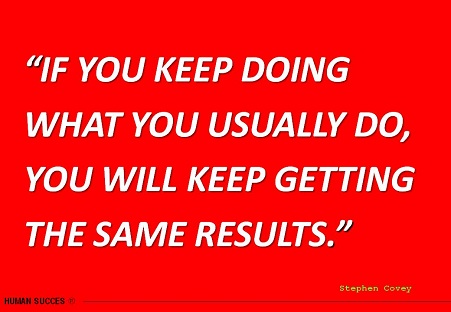

Reflection is the most common pitfall in the illustrated Kolb model. Instead, we want easy recipes; we cannot admit that the ideas that work, in human affairs are those that fit our idiosyncrasies, the idiosyncrasies of those around us, and the particularities of the context in which we are immersed. If we disregard these variables, it is likely that a recipe will get stuck halfway. I am the person who has direct access to the knowledge of the details of these variables, not the person who designed the recipe. Who then, better than I, to decide the best way to manage these variables via a process of reflection, and producing new ideas to do things differently next time?
A trainer-facilitator&coach that prides himself as such, can be very helpful in this process of reflection and producing new ideas.

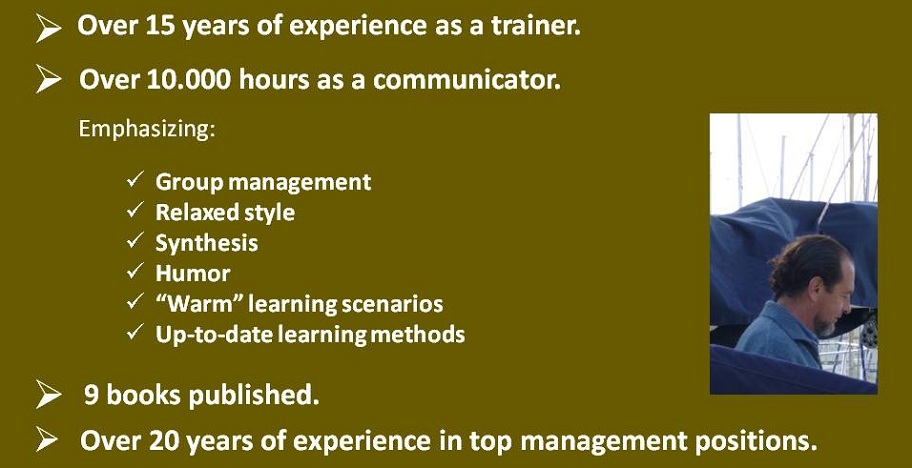

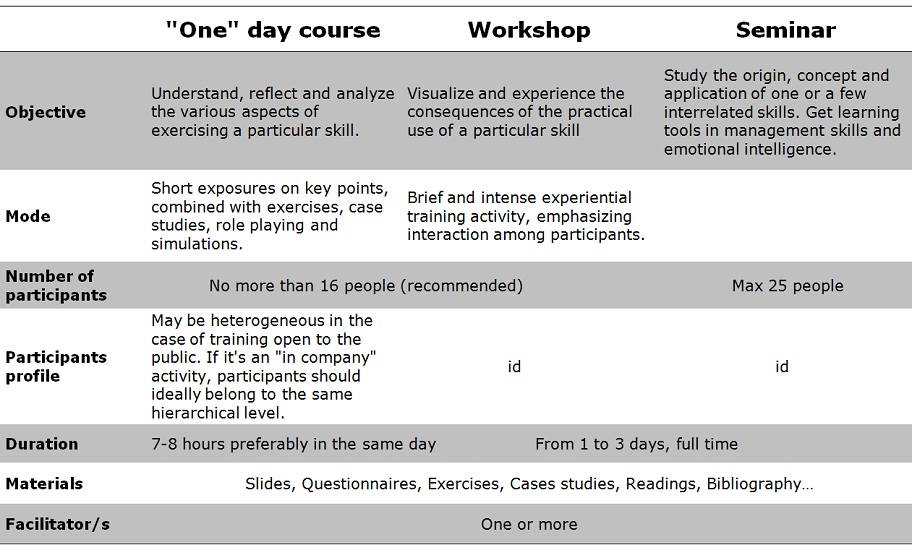

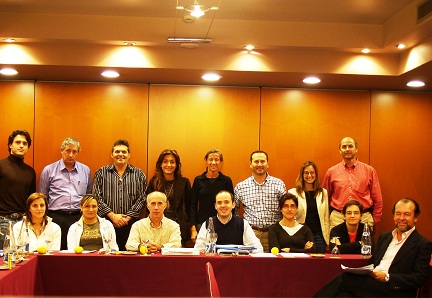


 .
.
